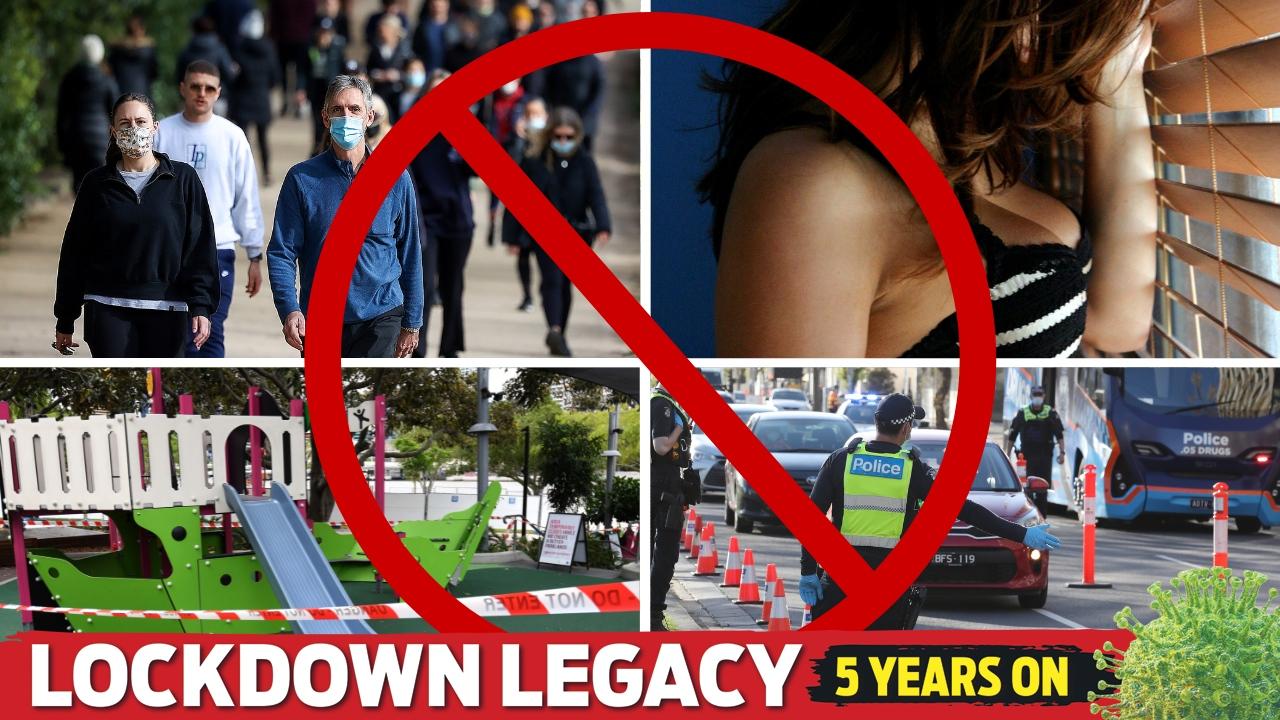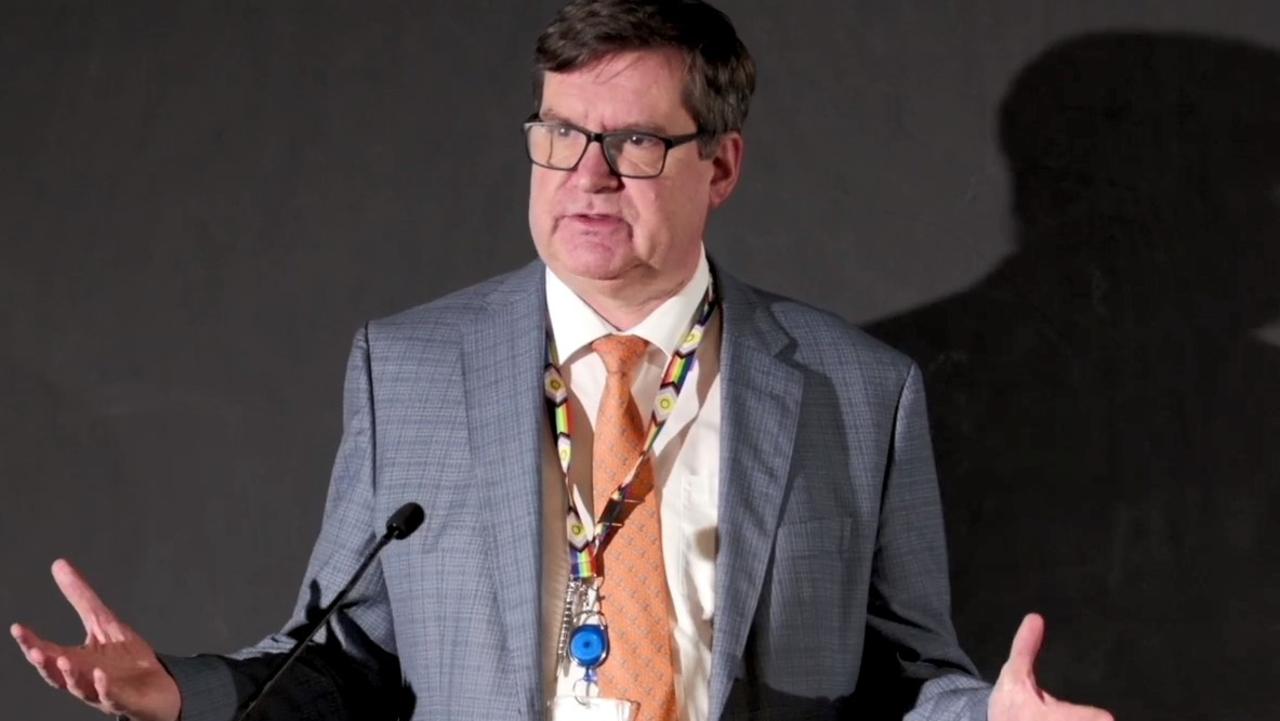Rolling coverage: Volunteers to test Victoria’s new hotel quarantine system
Victoria’s new hotel quarantine program will undergo a crash test using volunteers as the state prepares for the return of international flights.
This coronavirus article is unlocked and free to read in the interest of community health and safety. Save and refresh this article page for updates all day. Get full digital access to trusted news from the Herald Sun and Leader for just $1 a week for the first 12 weeks
A crash test of Victoria’s new hotel quarantine system will take place this week as authorities work to clean up the program that caused our second coronavirus wave.
Volunteers are understood to have been called in to run a simulation at hotels chosen to receive international travellers from December 7.
A Department of Justice and Community Safety spokesperson said: “In preparation for the resumption of international flights to Victoria, we are running a series of location-based exercises to test our new processes and practices.
“The exercises will simulate what return overseas travellers will experience during their quarantine period and provide a valuable opportunity for staff to put their comprehensive training to the test in a live environment.”
QUEENSLAND REOPENS BORDER TO VICTORIA
Queensland will open its borders to Victoria from December 1, after the state recorded its 28th straight day of no community cases on Wednesday.
Premier Annastacia Palaszczuk confirmed Victorians would join Greater Sydney in being allowed into the state from December 1.
Victoria has recorded 26 consecutive days without any new coronavirus cases. And there are no active cases after the state’s final COVID-19 patient was discharged on Monday.
It comes after Ms Palaszczuk on Tuesday announced that visitors from Greater Sydney would also be allowed from December 1.
Within hours of Tuesday’s announcement, demand for Queensland holidays on travel website Wotif surged over 140 per cent, while major airlines Qantas, Jetstar and Virgin all announced tens of thousands of extra seats in the lead-up to Christmas with Brisbane Airport braced for a 600 per cent increase in traffic to Sydney and Melbourne.
More than 16,000 Victorians were tested for coronavirus on Tuesday — a strong turnout after testing figures dipped in previous days.
HOW VICTORIA DEFEATED COVID
Experts say an “aggressive” contact tracing system and snuffing out COVID cases in the aged and healthcare sectors were critical to the state eliminating active infections.
There was not one active case of coronavirus in Victoria on Tuesday for the first time in 270 days. Daniel Andrews praised the efforts of all Victorians in reaching the milestone — just months after the state had a peak of 725 cases of COVID-19 in one day.
The last patient, a man aged in his 90s, was cleared of the virus and released on Monday, sparking a collective sigh of relief.
“This is a very, very significant day and every single Victorian can be proud of the part they have played in defeating the second wave,” the Premier said on Tuesday.
“To report zero active cases and zero new cases should be a point of pride for every Victorian.”
Chief Health Officer Brett Sutton lauded the achievement on Twitter: “How sweet it is. A testament to Victorians who endured and succeeded in a monumental task. Something to be so, so proud of.”
Mr Andrews said it was likely COVID-19 was still in the community and urged Victorians to remain vigilant.

NOT EVERYONE WILL GET SAME VACCINE SHOT
Medical experts will use the normal process to select which flu shots people get to decide how COVID-19 vaccinations are allocated.
With multiple coronavirus vaccines likely to be ready by March, the federal vaccine task force will begin evaluating who should get each type.
After the announcement the Oxford University and AstraZeneca candidate was up to 90 per cent effective, Health Minister Greg Hunt said he was confident of vaccines for everyone.
“Our hope is that all of the vaccines provide the coverage Australians need,” Mr Hunt said.
“We’re used to this, though; in any one year there may be a variety of different types of flu vaccines.
“This year, we had a number of flu vaccines that were available. The Australian public didn’t really notice the difference. Some were more suited to the elderly; others were more suited to the general population.
“That’s why we have a task force of medical experts to look at the vaccines.”
Australia has signed supply agreements with four vaccine makers. About 33 million units of the Oxford vaccine will be manufactured in Victoria.
Candidates from Moderna, Pfizer and Oxford University have reported successful trials.
Respiratory diseases specialist Brian Oliver told the Herald Sun it was important for the government to look at how each vaccine was likely to interact with people of different ages and health conditions.

“It may be that some vaccines are much better in certain age groups,” Prof Oliver said.
“Because these (candidates) are all so different in how they are made, it provides a benefit.”
Scott Morrison said the promising trial results were “beyond our best hopes, because there has never been a coronavirus vaccine before”.
“It’s clear the world really is on track to roll out a COVID-19 vaccine in 2021,” the Prime Minister said.
Mr Hunt said consideration was being given to immunity passports after Qantas announced it would require passengers to be vaccinated before allowing them to fly overseas.
“The likely course of events during 2021 is if somebody comes to Australia and a vaccine is widely available, either they’ll be vaccinated with verification or they’ll have to quarantine,” Mr Hunt said.
UNSW Kirby Institute head of biosecurity Raina MacIntyre said the use of “incentives” such as international travel was the best way to encourage vaccination.
She said similar rules could apply to aged-care workers, teachers and meat workers.

WHICH VACCINES HAS AUSTRALIA SECURED?
The federal government has secured 134.8 million doses of different vaccine candidates, including one from AstraZeneca-Oxford University. That candidate is in the most advanced stages, and if successful, 3.8 million doses will be delivered to Australia early next year, with another 30 million doses to be manufactured by CSL in Melbourne.
WHO WILL GET A VACCINE FIRST?
Based on advice from the Australian Technical Advisory Group on Immunisation, three priority groups have been identified, including “those who have an increased risk, relative to others, of developing severe disease or outcomes from COVID‑19, and those working in services critical to societal functioning”. Health Minister Greg Hunt said the rollout would “obviously start with the health workers and, if approvals are granted, for the elderly”.
WHERE WILL PEOPLE GET THE VACCINE?
Australians will be able to get vaccinated at GPs, hospitals, respiratory clinics and vaccination clinics. It will not be available at your local pharmacy “due to the targeting of priority populations, cold chain storage requirements and the use of multi dose vials”, the health department said.
HOW MUCH WILL IT COST TO GET JABBED?
The vaccine is free.
HOW MANY DOSES?
Two doses, a month apart.
VICTORIANS CAN SPEND SUMMER IN QUEENSLAND
Victorians can spend summer in sunny Queensland, with border restrictions due to lift on December 1.
And Victorian tourism operators are hoping Queenslanders venture south for their holidays.
The return of two-way travel between the states depended on Victoria reaching 28 days with no community transmission, Queensland Premier Annastacia Palaszczuk said on Tuesday.
“I hope this is welcome news for Queensland families in time for Christmas,” Ms Palaszczuk said. “Everything (in Victoria) is looking positive.”
The update provided a boost to the tourism sector and gave reassurances to families that they could be reunited for Christmas.

Victoria Tourism Industry Council chief executive Felicia Mariani said having interstate travel back was “a critical part of recovery for the visitor economy”.
She said the timing could work to Victoria’s advantage.
“A lot of parts of Queensland are going into their wet season. This is not the peak travel season for Queensland, but this is the peak travel season for places like Melbourne,” she said.
Victorians have been barred from travelling to Queensland since July 10.
Queensland Tourism Industry Council chief executive Daniel Gschwind said the lifting of that border ban was “tremendous news”.
“It’s a relief and a timely Christmas present Queensland has given itself and all the tourism operators in the state,” Mr Gschwind said.
Bikash Randhawa, chief operating officer of Village Roadshow theme parks, including Wet'n'Wild, said he had “goosebumps” when the reopening was announced.

“This is the best news of 2020,” he said. “This is the best thing that could have happened – it’s fantastic.”
Prime Minister Scott Morrison said the Queensland border reopening would bring joy to Australians just in time for the festive season, in line with the reopening plan agreed to at national cabinet.
“It’s also a relief for so many small businesses across both states, with more tourists and visitors set to visit soon, which is good for jobs and the economy,” Mr Morrison said.
“This is an important step in our plan to get Australia safely open by Christmas, as agreed by National Cabinet (with the exception of WA).
“All states and territories have worked hard to put appropriate protections in place but as we open up it’s important every single person continues to do their bit to stay COVID-safe.”
Health Minister Greg Hunt said the borders reopening marked a step towards a more normal Australia.
WHAT DOES ELIMINATING VIRUS MEAN FOR VIC ?
Victoria will have eliminated coronavirus from the community, if the state continues to record zero new cases from now until Friday.
The state marked its first ‘triple’ doughnut day on Tuesday, of zero new and active cases, and no deaths.
It’s the first time since February 29 — 269 days ago — that Victoria hasn’t had a single active case, and comes after 25 consecutive days of zero infections.
Epidemiologists define elimination of coronavirus as 28 days without new or mystery cases in the community.
Doherty Institute Director Professor Sharon Lewin said if we reach that mark the virus has effectively been eliminated from the community.
“When we talk about coronavirus cases, there’s imported cases in quarantine or community transmission,” Prof Lewin said.
To read this story in full, click here.




